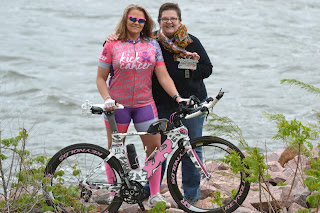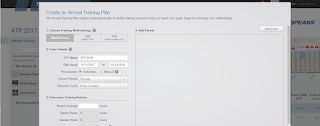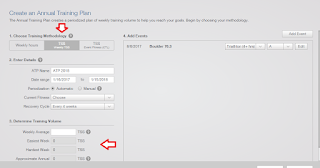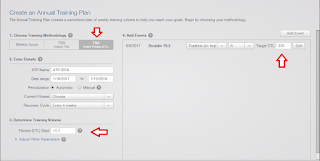I love running.
When I’m finished with a run, I have that sense of accomplishment
and satiation that comes from endorphins coursing through my brain. For all the
satisfaction that comes with the run itself - I’m a data guy. A workout without data, metrics, charts and
graphs is like witnessing a beautiful sunset on your dream vacation and not
having the picture to show your relatives.
For all the data that you can use to analyze and improve your running,
I’ve learned in the past two weeks that there is nothing more powerful (all pun
intended) than Stryd power. Here’s why.
For many runners, data comes from what is native to your GPS
watch in terms of pace, distance, heart rate, grade and elevation. I’ve been intrigued with running with power
and using that data in my training since running power meters first hit the
market. Running with a power meter promised
to have many of the same advantages as a cycling power meter. By knowing your run power, you could know
your actual work and output during training. If you know your actual rate of
work in training, it follows that you would know definitively what performance
you can expect to perform on race day - exceed that work rate, and you risk of
unraveling in a muscle-quivering mess walking from aid station to aid station.
Intrigued to put running with a power meter to the test, I
recently had a chance to talk to coach Jim Vance, who literally wrote the book
Run with Power. Jim advocated Stryd as
the product leader in the space, so I was eager to get my hands on a Stryd foot
pod and try it for myself. While it has
no direct bearing on product performance, the out-of-the-box experience is an
important first impression and speaks volumes about how much Stryd has thought
about the user. Simplification is
paramount. Stryd gets a high rating right
from the start. The first thing I experienced when I flipped back the cardboard
lid of the package was a simple black on white card with 3 steps comprised of 9
words of instruction.
Get Started Here.
Following the instructions to “get started
here”, I opened my browser and navigated to stryd.com/get-started. The Set Up
Stryd process is straight-forward and tech sexy. The wireless charging unit is sleek and has
the look and feel of quality. The registration
and profile setup are easy they warrant no further description and the
integration to your other fitness applications is idiot proof. I had my Stryd configured to receive data from
my Garmin and send data to TrainingPeaks as fast as I could read the text on
the page. Installing the Stryd app on my
iPhone was equally easy and the foot pod seamlessly interfaces with the phone
app. One of my favorite features on the
phone app is being able to check the battery charge level of the Stryd foot pod
to monitor the progress to a full charge – another tech sexy point!
Run With Stryd
The Run with Stryd process is where you first start
to interface Stryd with your GPS or other watch; in my case a Garmin
735XT. Stryd’s website is very intuitive
and the instructions are simple. Select
the type of watch you are pairing the Stryd with and then follow Stryd’s
instructions. If you follow the
instructions literally, you should have no problem completing the device
connection and collecting data. Deviate at all from the instructions and you
will potentially find yourself lost on in your watch’s menu. My advice, trust the Stryd instructions and
not your belief in your confidence in tech adoption.
Stryd is compatible with Garmin, Suunto, Polar, iOS,
Android, or you can use the Stryd by itself. In the case of Garmin, I
downloaded the Stryd Power activity app and then installed it in the Garmin
Express application from my laptop. On
my watch, I set up a running activity screen with a single field for
“power”. Once the setup was completed, I
started a run activity and the power foot pod connected within 20 seconds.
During my first run with Stryd I frequently checked my watch to take note of
the power numbers in various terrain (uphill, flats and downhill), and was
pleased to see the reading adjust instantly to the changes. Hit an uphill
section and the number reading would instantly increase. Adjusting my pace on a constant grade, and
again the display would immediately change in response. By contrast, pace and heart rate would like
considerably behind the Stryd’s response time.
At the end of my run, I completed the activity, launched the
app and with a single thumb press synced my power to Stryd, Garmin and
TrainingPeaks. From the Stryd app, I could immediately see a summary of my
power data from the run on my phone. Eager to see my complete power data
analysis I turned to the last of the three easy “get started” steps - Learn
From Stryd.
Navigating to Power Center on the Stryd website where you
can begin to analyze your data. Again, first impressions are important and the
Analyze view of Power Center presents a dashboard view with a summary of the
workout including power, form power and cadence. I used the radio buttons to toggle between
elapsed and moving data to filter out stop light stops. This is great if you capture elapsed time on
your GPS and still want the option to just see moving time data.
 It’s not been more than a week and I’ve collected Stryd data
for six runs in that time. That has
enabled me to explore some of the other features of Power Center, including the
comparison feature to evaluate two workouts side by side and compare
differences. Analysis is only the
beginning of the features in Power Center.
I wanted to begin exploring other features in the application, including
Improve, Compete and Settings.
It’s not been more than a week and I’ve collected Stryd data
for six runs in that time. That has
enabled me to explore some of the other features of Power Center, including the
comparison feature to evaluate two workouts side by side and compare
differences. Analysis is only the
beginning of the features in Power Center.
I wanted to begin exploring other features in the application, including
Improve, Compete and Settings.
Settings is where I first completed my profile and
data sync preferences. This is also
where I would establish my power zones.
Stryd provides 4 methods in the application for establishing your power
zones. For this review, I chose the 5K
estimation method. During this past
week, I performed the Jim Vance 20-minute rFTPw test and ironically came up
with similar FTP numbers using the 5K estimation method. I’ll likely experiment with the other methods,
including the 3-9 test, which involves a 3-minute all out, followed by a short
recovery, and then a 9-minute hard effort.
With FTP known, I was able to establish my power training zones and
experiment with training within specific power zone ranges.
Power Center
The Improve screen of Power Center is designed to
provide individual insights about your power data and running performance. The Runner Profile presents your
relative strengths and weaknesses with respect to metabolic fitness, muscle
power, and muscle endurance. The Training Optimizer suggests workouts
that will help you focus areas where you have the most potential and areas for
improvement. Having facts and data helps
me be accountable to today’s performance and provides actionable information
for setting goals and direction to my training.
The Training Power Heat Map does a great job of illustrating
where you are spending your training time compared to where you should be
spending your time to reach your running goals.
The Stryd and Power Center has provided a whole new world of
insights in the first week of usage. It
has peaked my curiosity to learn more, and is channeling me to address my
greatest opportunities for improvement and track my progress. It feels like I’ve just begun to understand
the new possibilities these insights will provide and stirred up a sense of
excitement about my training plan over the winter months and eager anticipation
for my race season next year.
If you are looking to stir up some excitement for your
tech-lover-athlete this holiday season, Stryd is more powerful than
mistletoe. Cheers!
Authored by Rich
Soares























